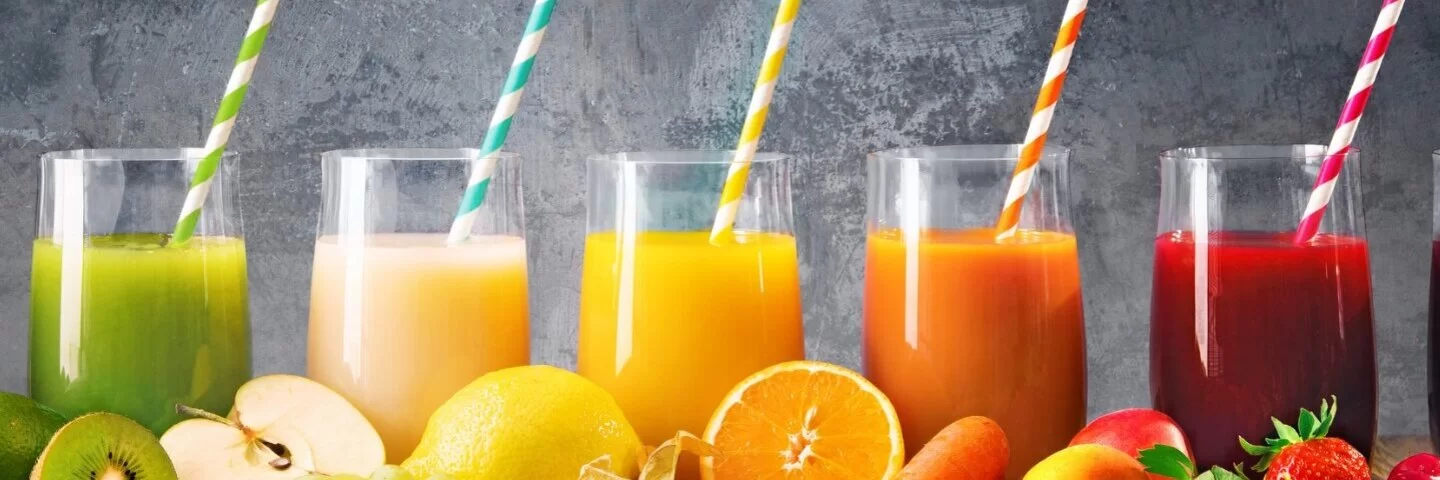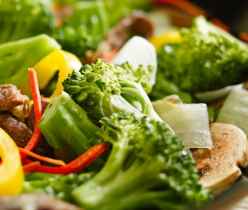From green smoothies to strawberry smoothies: four recipes for smoothies made from fruit and vegetables – and why fresh, homemade smoothies are healthier than ready-made products from the supermarket.

What are smoothies and how healthy are they?
Smoothies are drinks made from whole or pureed vegetables or fruits and other ingredients. They are made in a blender and have a thick, creamy consistency ( smooth means “fine, even, creamy”). The ingredients can vary according to taste and needs, which is why smoothies are also popular with children . They particularly like less tart vegetables such as spinach or lamb’s lettuce and fruit such as bananas or berries for a nice consistency. Dairy products such as yoghurt or quark as well as wild herbs or so-called superfoods such as chia seeds or acai powder give homemade smoothies additional flavors.
Benefits of smoothies
Smoothies are quick to prepare and can be bottled and enjoyed on the go. Smoothies give you the opportunity to incorporate more vegetables and fruit into your daily diet. The German Nutrition Society recommends 650 grams of vegetables and fruit per day . The more we eat, the lower the risk of high blood pressure , coronary heart disease (calcification of the coronary arteries) and obesity .
Smoothies support a healthy and balanced diet . Depending on the ingredients, they are rich in fiber , protein, calcium, vitamin C, minerals such as selenium and zinc, and antioxidants. Many people also enrich their smoothies with protein powder. In combination with a low-carbohydrate diet, the intake of protein can help with weight loss and prevent muscle loss during a diet.
Disadvantages of smoothies
Colorful smoothies are usually prominently displayed at the entrance to supermarkets next to the fruit and vegetables. This easily gives consumers the impression that ready-made smoothies are good for their health. Manufacturers also often advertise that smoothies are full of vitamins and (partly) cover the daily requirement of fruit and vegetables. In fact, ready-made smoothies consist almost exclusively of fruit or fruit concentrates and are also usually pasteurized, i.e. heated to high temperatures. This means that they last longer, but also have fewer nutrients than fresh, homemade smoothies. They also contain less fiber, vitamins or secondary plant substances than whole fruits.
In general, it is important to remember that foods with a high sugar content, such as fruit, can have a negative impact on your weight in the long term and can cause tooth decay . Fruit acid in fruit also poses the risk of damaging tooth enamel if consumed in excess. It is therefore important to take a look at the list of ingredients in ready-made smoothies.
What is the healthiest smoothie?
The green smoothie is generally considered to be the healthiest of the smoothie varieties because its ingredients contain many secondary plant substances. This is especially true for spinach, broccoli, the greens of carrots, parsley, cress, nettles, dandelions and cabbage . These are also responsible for the bitter taste. The ideal ratio for a green smoothie is 50:50 (plant greens + fruit) with water. The rule is: the darker green a smoothie is, the more secondary plant substances it contains and the healthier it is. Secondary plant substances have anti-inflammatory, blood pressure-lowering and antioxidant effects. According to studies, they can reduce the risk of certain types of cancer and cardiovascular diseases.
However, caution is also advised with green smoothies. They should not be consumed in excess. Many green vegetables such as spinach and lettuce sometimes have a high nitrate and oxalic acid content. The liquid consistency of smoothies makes it possible to consume large quantities of these vegetables. This can lead to us consuming too much oxalic acid and nitrate. Oxalic acid is suspected of promoting the formation of bladder and kidney stones. Nitrate can be reduced to nitrite in the body and contribute to the formation of carcinogenic nitrosamines. There are legally defined maximum levels of nitrate for drinking water (50 milligrams per liter) and spinach (3,500 milligrams per kilogram) – but not for smoothies.
Smoothie for children – this recipe tastes
Parents can “sneak in” vegetables in smoothies that children would otherwise avoid. However, replacing whole vegetables and fruit with smoothies is not advisable. Younger children in particular, who are still learning to eat, need the tactile experience in their mouths – also in order to develop food preferences. However, a small smoothie is a healthy addition for breakfast or as an afternoon snack.
But how do you make the perfect children’s smoothie? There are many recipes for smoothies that children find delicious. Most parents like to choose green smoothies because they contain less sugar than red smoothies with lots of fruit.
When making a green smoothie, it’s best to avoid strawberries, raspberries and blueberries – they turn the smoothie brown. The first smoothie is better received if it is visually appealing, i.e. bright green. The best way to achieve this is with baby spinach. However, you can replace any of the ingredients in the recipe with others. To avoid getting your children used to sweet things at an early age, it’s best to avoid using additional sweeteners. Instead, go for ripe bananas – these also make the smoothie sweet, but are healthier.

